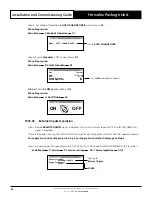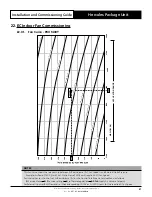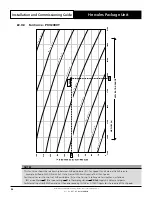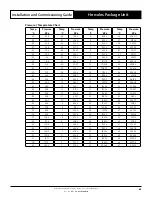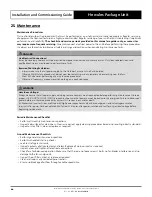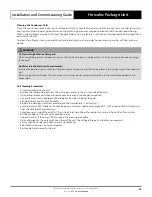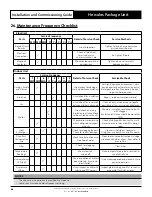
62
Installation and Commissioning Guide
Hercules Package Unit
Installation and Commissioning Guide - Hercules Package Unit
Doc. No.0525-021
Ver. 21 221110
24. Refrigerant Charging
IMPORTANT NOTES
• The units detailed on this guide are pre-charged with R-410A refrigerant
. Should there be need to add or remove some
refrigerant, it is recommended to follow one of the charging methods explained below.
• Never allow R-410A refrigerant to vent into the atmosphere. This is a serious offence in Australia and New Zealand. Always
reclaim refrigerant using equipment and container dedicated for R-410A system use only.
• All work must be carried out in accordance with Australia and New Zealand refrigerant handling code of practice.
• Only qualified technicians must perform any work related to addition or removal of refrigerant.
• R-410A refrigerant must always be charged in liquid state.
• Only during the compressor running condition the system can be charged through the suction service port on the
compressor suction line.
• Changes in refrigerant charge must be noted to a label that is fixed to the unit for future reference.
CAUTION
R-410A refrigerant has POE oil that rapidly absorbs moisture. The maximum time any system can be opened to atmosphere is 15
minutes.
Refrigerant Charge Details
Refrigerant Type
Units
PKV1400T
PKV2000T
R-410A
R-410A
Refrigerant Charge - Circuit #1
grams
19,500
28,000
Refrigerant Charge - Circuit #2
grams
19,500
28,000
Charging Method: Subcooling and Superheat
The primary method for correctly adjusting the charge for electronic expansion valve system is subcooling. In normal
steady state condition Controller adjusts the EEV steps to maintain superheat as close as possible to the target
superheat, which corresponds with the discharge superheat as per below table.
Heating Cycle
During the heating cycle, the compressor will follow the logic below to achieve the target superheat.
Conditions
Target Superheat
Compressor Speed
Discharge Line Temperature (DLT)
RPM > 3390
> 90°C
6K
< 85°C
Normal 6K to 9K
Conditions
Target Superheat
Compressor Speed
Discharge Line Temperature (DLT)
RPM < 3360
> 90°C
6K
< 85°C
Normal 6K to 9K





